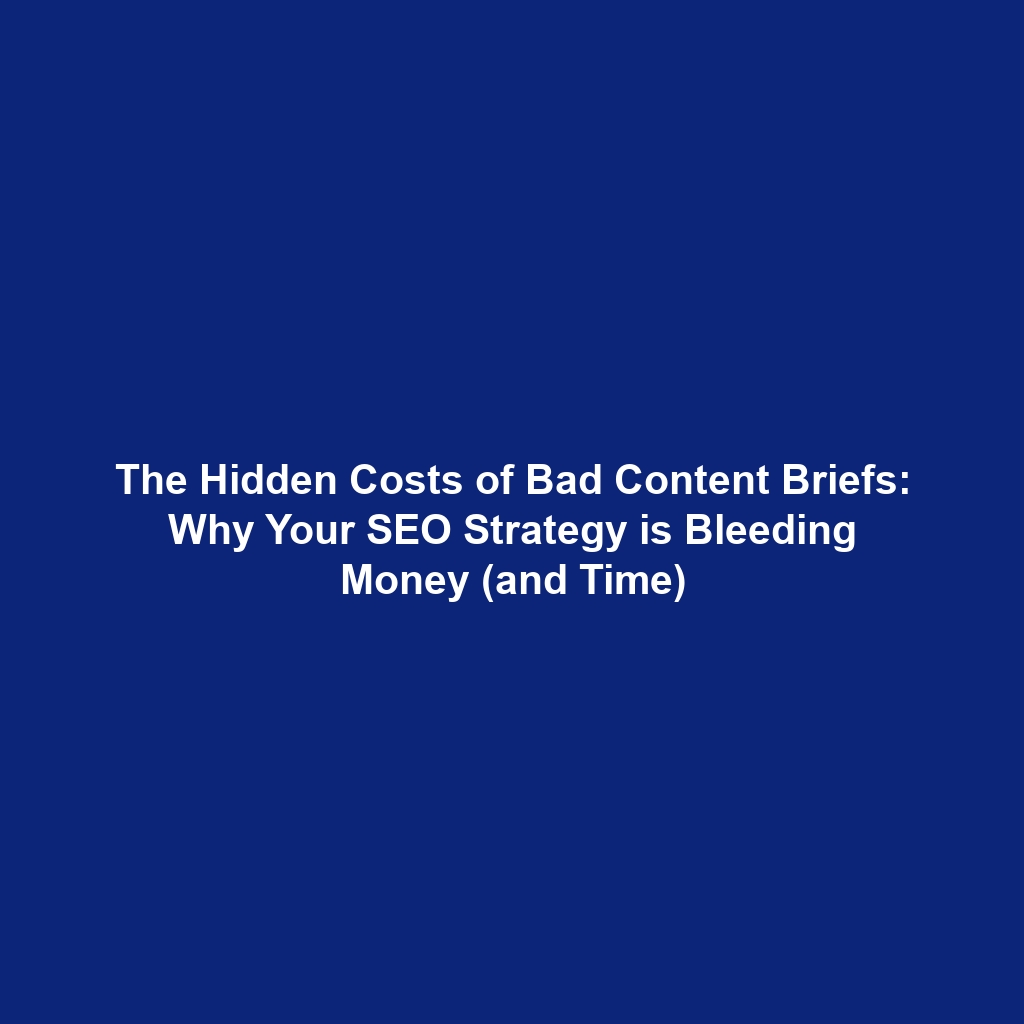Introduction: The Evolving World of SEO in 2023
The SEO landscape is in constant flux. What worked last year might not be effective today. As we move further into 2023, SEO professionals and marketers need to stay ahead of the curve by understanding and adapting to the latest trends. This guide dives deep into the key shifts shaping search engine optimization, providing actionable insights to improve your strategies and achieve sustainable results. We’ll explore everything from the growing importance of AI-powered content to the nuances of E-E-A-T and the rise of visual and voice search optimization.
The Continued Rise of AI and Machine Learning in SEO
Artificial intelligence (AI) and machine learning (ML) are no longer futuristic concepts; they are integral components of modern SEO. Google’s algorithms, such as RankBrain, heavily rely on AI to understand user intent and deliver relevant search results. Understanding how AI impacts SEO is crucial for staying competitive.
AI-Powered Content Creation and Optimization
AI writing tools are becoming increasingly sophisticated, capable of generating high-quality content at scale. While these tools can be helpful for creating initial drafts or generating ideas, it’s essential to remember that human oversight remains critical. AI-generated content should be carefully reviewed, edited, and optimized to ensure accuracy, relevance, and originality. The goal isn’t to replace human writers, but to augment their capabilities and improve efficiency. For example, AI can be used to identify keyword opportunities, analyze competitor content, and optimize existing content for better rankings.
Understanding and Leveraging Google’s AI Algorithms
Google’s core algorithms are constantly evolving, and AI plays a significant role in these updates. RankBrain, for example, helps Google understand the meaning behind search queries and deliver more relevant results. To leverage these algorithms, focus on creating high-quality, user-centric content that addresses specific user needs. Optimize your content for semantic search by using natural language, incorporating related keywords, and providing comprehensive information on your topic. Google’s BERT (Bidirectional Encoder Representations from Transformers) update further emphasizes the importance of understanding natural language processing and user intent. [You can read more about BERT on Wikipedia](https://en.wikipedia.org/wiki/BERT_(language_model)).
The Growing Importance of E-E-A-T: Experience, Expertise, Authoritativeness, and Trustworthiness
E-E-A-T (Experience, Expertise, Authoritativeness, and Trustworthiness) remains a critical ranking factor in 2023. Google prioritizes websites that demonstrate these qualities, especially for YMYL (Your Money or Your Life) topics that can impact a user’s health, financial stability, or safety. Building E-E-A-T requires a multi-faceted approach.
Demonstrating Experience in Your Niche
Experience is a newer addition to the E-A-T framework, highlighting the importance of first-hand knowledge and practical experience. Share personal stories, case studies, and real-world examples to showcase your expertise. For example, if you’re writing about digital marketing, share successful campaign results and lessons learned. If you’re reviewing a product, provide detailed information about your personal experience using it.
Establishing Expertise and Authoritativeness
Expertise refers to the depth of knowledge and skill in a particular subject area. Authoritativeness refers to the recognition and respect you receive from other experts in your field. To establish expertise and authoritativeness, create high-quality, informative content that demonstrates your understanding of the topic. Cite credible sources, link to relevant research, and participate in industry discussions. Consider contributing guest posts to reputable websites in your niche and building relationships with other experts. Earning backlinks from authoritative websites can also significantly boost your authoritativeness.
Building Trustworthiness and Credibility
Trustworthiness is paramount, especially for YMYL topics. Ensure your website is secure (HTTPS), provides accurate information, and has a clear privacy policy. Display contact information prominently and make it easy for users to reach you. Solicit reviews and testimonials from satisfied customers. Be transparent about your business practices and avoid making misleading or exaggerated claims. Consider implementing schema markup to provide search engines with structured data about your business, products, and services. [Schema.org](https://schema.org/) provides a comprehensive list of schema markup types.
Mobile-First Indexing and Mobile Optimization Strategies
Mobile-first indexing has been the standard for several years, meaning Google primarily uses the mobile version of your website for indexing and ranking. If your website isn’t optimized for mobile devices, you’re likely missing out on significant traffic and ranking opportunities. Mobile optimization goes beyond simply having a responsive design.
Responsive Design and Mobile-Friendly Content
Ensure your website is responsive, meaning it adapts seamlessly to different screen sizes and devices. Use a mobile-friendly theme or template and optimize your content for smaller screens. Use shorter paragraphs, larger font sizes, and clear headings to improve readability on mobile devices. Optimize images for mobile by compressing them to reduce file size and improve loading speed. Tools like Google’s PageSpeed Insights can help you identify and fix mobile optimization issues.
Mobile Page Speed Optimization
Page speed is a critical ranking factor, especially on mobile devices. Users expect websites to load quickly, and slow-loading pages can lead to high bounce rates and lower rankings. Optimize your website’s code, leverage browser caching, and use a content delivery network (CDN) to improve page speed. Consider using Accelerated Mobile Pages (AMP) to create lightweight, mobile-optimized versions of your content. However, AMP is becoming less crucial as Google focuses on core web vitals.
Core Web Vitals: A Key Ranking Factor
Core Web Vitals are a set of metrics that measure user experience on your website. These metrics include Largest Contentful Paint (LCP), First Input Delay (FID), and Cumulative Layout Shift (CLS). Improving your Core Web Vitals can significantly boost your search rankings and improve user satisfaction.
Understanding and Improving LCP, FID, and CLS
Largest Contentful Paint (LCP): Measures the time it takes for the largest content element on a page to become visible. Aim for an LCP of 2.5 seconds or less. Optimize images, videos, and other large elements to improve LCP.
First Input Delay (FID): Measures the time it takes for a user to interact with your page. Aim for an FID of 100 milliseconds or less. Optimize JavaScript code and reduce the amount of time it takes for your browser to process and execute code.
Cumulative Layout Shift (CLS): Measures the amount of unexpected layout shifts that occur on a page. Aim for a CLS score of 0.1 or less. Reserve space for ads and images to prevent content from shifting unexpectedly.
The Power of Visual Search Optimization
Visual search is becoming increasingly popular, with users using images to find products, information, and inspiration. Optimizing your images for visual search can drive significant traffic to your website.
Image Optimization for Google Lens and Other Visual Search Engines
Use descriptive file names and alt text for your images. Optimize image sizes and compress them to reduce file size. Use high-quality images that are relevant to your content. Submit your images to image sitemaps and include them in your website’s sitemap. Consider using structured data markup to provide search engines with more information about your images. For example, you can use schema markup to specify the product featured in an image, its price, and its availability.
Voice Search Optimization: Preparing for the Future of Search
Voice search is another rapidly growing trend, with users increasingly using voice assistants like Siri, Alexa, and Google Assistant to search for information. Optimizing your content for voice search requires a different approach than traditional SEO.
Optimizing for Conversational Queries and Long-Tail Keywords
Voice searches are typically longer and more conversational than text-based searches. Focus on optimizing your content for long-tail keywords and answering specific questions that users are likely to ask. Use natural language and write in a conversational tone. Create FAQ pages that address common questions related to your niche. Use structured data markup to provide search engines with the information they need to understand your content and deliver it in voice search results.
Local SEO: Dominating Local Search Results
Local SEO is crucial for businesses that serve a local customer base. Optimizing your website and online presence for local search can help you attract more customers in your area.
Google Business Profile Optimization and Local Citations
Claim and optimize your Google Business Profile (formerly Google My Business) listing. Provide accurate and up-to-date information about your business, including your address, phone number, website, and hours of operation. Add photos and videos to your listing. Solicit reviews from satisfied customers. Build local citations by listing your business on relevant online directories, such as Yelp and Yellow Pages. Ensure your NAP (Name, Address, Phone Number) information is consistent across all online platforms.
Video SEO: Maximizing Visibility on YouTube and Google
Video content is becoming increasingly popular, and optimizing your videos for search can drive significant traffic and engagement. YouTube is the second largest search engine in the world, and Google often includes video results in its search results pages.
YouTube SEO Best Practices and Video Optimization Techniques
Choose relevant keywords for your video titles and descriptions. Create compelling thumbnails that capture users’ attention. Optimize your video tags and categories. Add closed captions and transcripts to your videos. Promote your videos on social media and other online platforms. Encourage viewers to like, comment, and subscribe to your channel. Use YouTube Analytics to track your video performance and identify areas for improvement. Consider using keyword research tools specifically designed for YouTube, such as TubeBuddy or VidIQ.
Conclusion: Embracing Change and Adapting to the Future of SEO
The SEO landscape is constantly evolving, and staying ahead of the curve requires a willingness to embrace change and adapt to new trends. By focusing on user experience, creating high-quality content, and optimizing your website for mobile, voice, and visual search, you can improve your search rankings and achieve sustainable results. Remember to prioritize E-E-A-T and build trust with your audience. By staying informed and adapting to the latest SEO trends, you can position your website for success in the ever-changing world of search.


